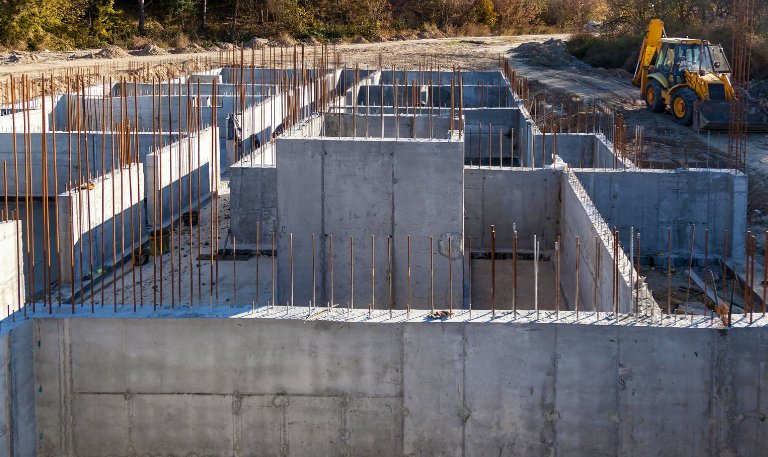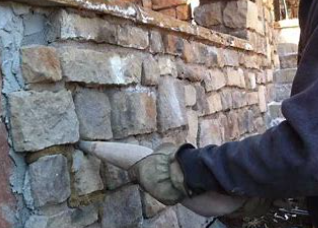Infrastructure Under Attack
With the long awaited passage of the Bipartisan Infrastructure Law (Infrastructure Investment and Jobs Act), America is poised to make a once-in-a-generation investment in our nation’s infrastructure and competitiveness.
In making this investment in our infrastructure we need to be more clear-eyed in our expectations. Choices we make (material, location, etc.) have an outsized impact upon the world we will be living in. We need to build things that are resilient and make our communities more livable. And while the threats to our infrastructure are numerous, they are manageable.
The Threats
Salt
Salt is among the most insidious threats. Once it gets into a freshwater body it is VERY hard to get back out—not impossible, but rather very expensive.
A recent article from the Washington Post found that:
“Freshwater salinization syndrome has begun to undermine the effectiveness of multimillion-dollar stream restoration projects to reduce the flow of pollutants entering the Chesapeake Bay. The concentrations of sodium in Potomac water drawn in Loudoun County have crept up from about 10 milligrams per liter in 1996 to nearly 16 milligrams per liter this year, with occasional spikes above the Environmental Protection Agency’s advisory level of 20 milligrams for people with high blood pressure. In the reservoir, sodium concentrations are now consistently above that threshold and, on some days, above the 60 milligrams per liter mark the EPA says is the high threshold at which some people notice a taste difference in the water, according to Virginia Tech’s Occoquan Watershed Monitoring Laboratory.”
In short, this article noted that water in the reservoir has triple the amount of sodium (salt) that the EPA advises caution for folks with high blood pressure and is at the threshold where folks can taste the salt in the water. This means that this resource that we have come to rely on is in grave jeopardy, which is particularly troubling given the historical underinvestment in our water supply, distribution, and treatment infrastructure.
Aside from its environmental impact on the drink-ability of water supplies, salt accelerates the degradation process experienced by steel, asphalt, and concrete. There are techniques and strategies to reduce salt usage and its impacts. But the best strategies use materials and coatings that do not corrode.
Water
The impact of water is most directly felt on infrastructure through rain events. When the water falls it needs to go somewhere. We’ve historically used drains and pipes to convey this excess water. Underdesign and undermaintenance of these systems (eg clogged drains), coupled with denser development and more intense rainfall events, have overwhelmed our infrastructure. More on Stormwater
Tidal flooding and low lying areas further compounds the challenge of managing water. If the designs anticipate this challenge it can be managed quite well (eg elevating structures). Forethought in our infrastructure designs will ensure that it lasts without becoming a burden.
Temperature
The changing climate is raising temperatures above historical averages. This is problematic if infrastructure does not take this into account.
Roads, runways, and railways may be among the most vulnerable. For example, when asphalt roadways get hot they become soft and malleable. Additionally they degrade quicker. These two challenges explain Florida’s propensity for building roads with concrete as opposed to asphalt when compared to states further North.
Proper engineering design can address most of the challenge.
Others
Not to shortchange all the threats, but there are several other pieces challenging our infrastructure:
- Nutrients– green lawns and abundant farms take on a lot of nutrient. When these nutrients run off the property and entered the natural environment harmful algal blooms and fish kills can result.
- Silo-ed Thinking– There isn’t a shortage of good ideas, but rather a shortage of opportunities to implement.
- Community Insensitive Design– Road construction can connect communities, but if not done well it can physically divide neighborhoods.
Looking Ahead
As we look to build our infrastructure we need to look at overdesigning and future-proofing our infrastructure. While it will raise costs, it will save money in the long run. Overdesigning systems prevents today makes up for historical ignorance, and avoids labor- intensive maintenance processes and aggressive replacement cycles.
There are certainly innovative materials and techniques that can address many of these challenges.
- PaveDrain– a low maintenance permeable pavement
- GFRP (fiberglass rebar)- non-corrosive concrete reinforcement
- InsulBlock– better insulated masonry walls
Always eager to talk more about building resilient infrastructure.

VP of Business DevelopmentAaron Fisher
Latest News

4 Ways To Reinforce Concrete
Concrete is one of the most fundamental materials used in construction. If you’re working on a domestic project or a […]

The Environmental Benefits Of Using Ready-Mix Concrete
The construction industry is changing quickly to meet the growing demand for sustainability and eco-friendly practices. One of the most […]

6 Essential Tips For Grouting Stone Veneer
Grouting stone veneer is an important step in the installation process that can significantly impact the overall look and durability […]

Should You Fill Hollow Concrete Blocks?
Hollow concrete blocks are widely used in construction due to their strength, versatility, and lighter weight compared to solid blocks. […]
